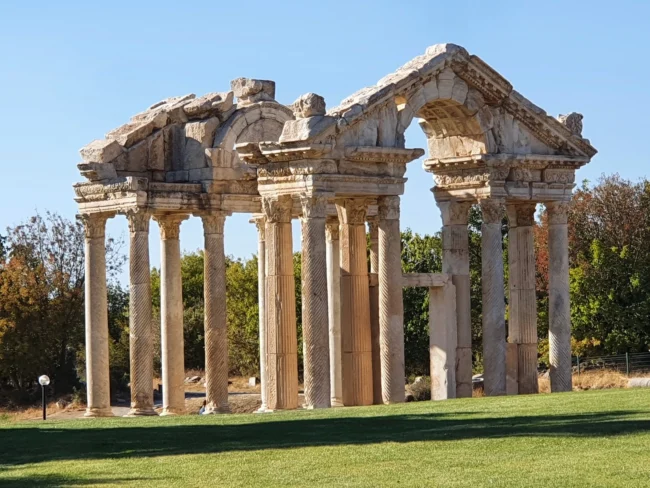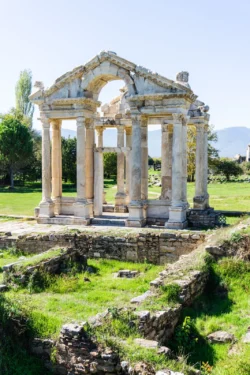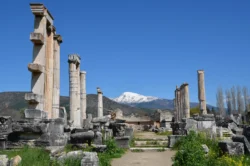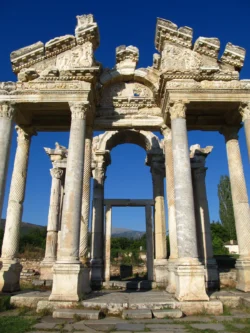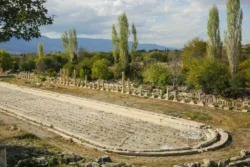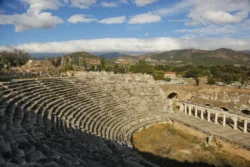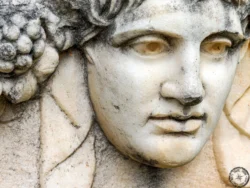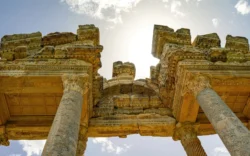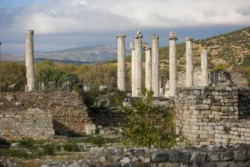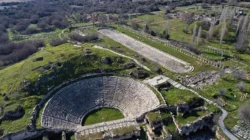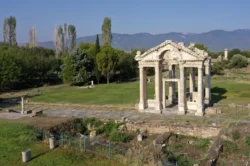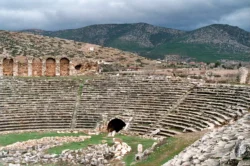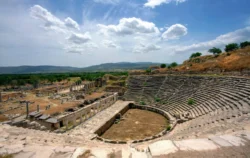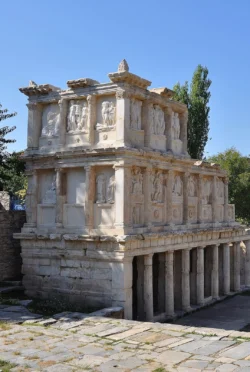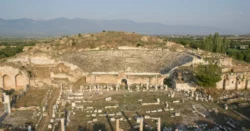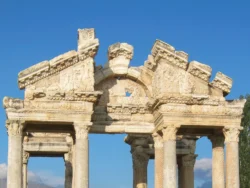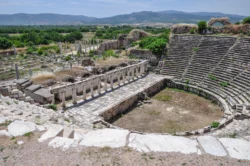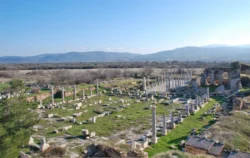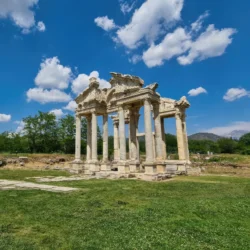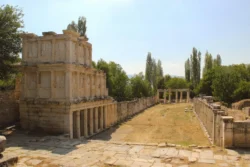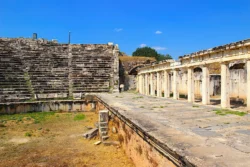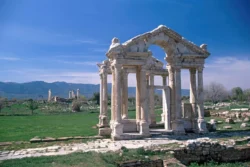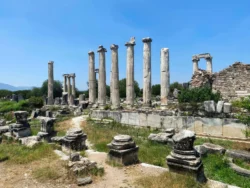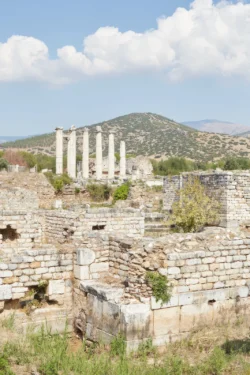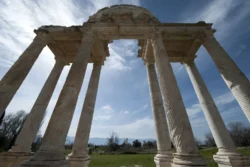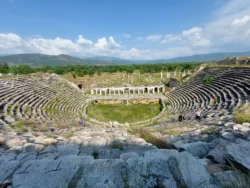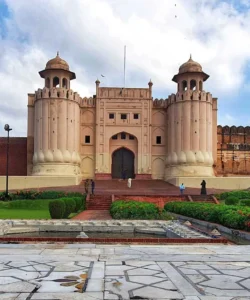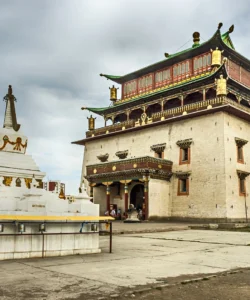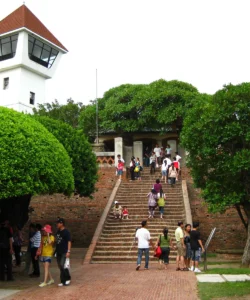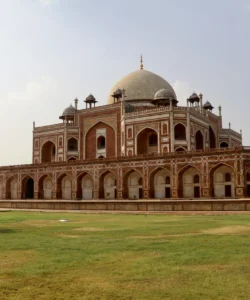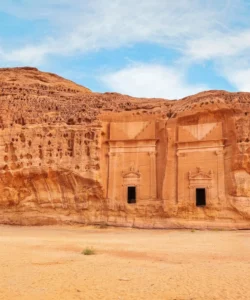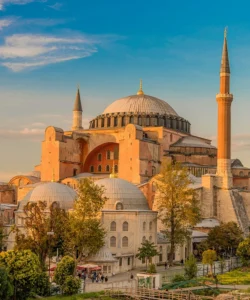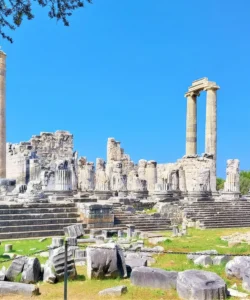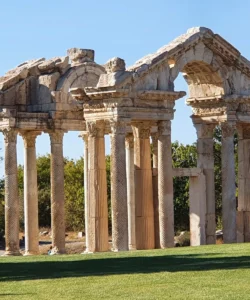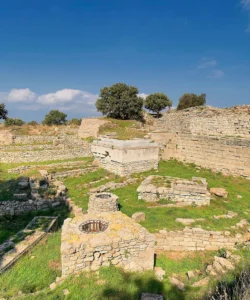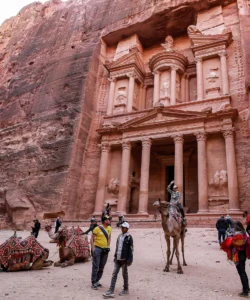Aphrodisias is a remarkably preserved archaeological site in southwestern Turkey. Named after Aphrodite, the goddess of love and beauty, the city was famous throughout the Roman world for its sanctuary dedicated to the goddess and its renowned school of marble sculpture. It is a UNESCO World Heritage Site that provides a detailed glimpse into Roman provincial life and art.
Listen to an introduction about Aphrodisias
Name
Aphrodisias (Ancient Greek: Ἀφροδισιάς), named after the goddess Aphrodite.
Address
The ancient city is located near the modern village of Geyre, in the Karacasu district of Aydın Province, southwestern Turkey.
How to Get There
Aphrodisias is in a more rural location, making it less accessible by public transport and often visited by car or tour.
- From Istanbul: The most convenient way to travel from Istanbul is to take a domestic flight to either Denizli Çardak Airport (DNZ) or İzmir Adnan Menderes Airport (ADB). From there, you would need to rent a car or take a taxi for the final drive, which is about 1-3 hours.
- From Nearby Cities: Aphrodisias is a popular day trip from nearby tourist hubs like Pamukkale, from which it is a scenic drive of about an hour.
Landscape and Architecture
Aphrodisias’s landscape is an archaeological park filled with grand marble structures and a wealth of sculptures.
- Marble Quarries: The city’s wealth and fame were directly tied to the nearby marble quarries. The abundance of high-quality marble allowed Aphrodisian sculptors to flourish and create the city’s magnificent public buildings and sculptures.
- Grand Urban Plan: The city’s surviving urban fabric is a testament to Hellenistic and Roman urban planning. Key structures are arranged around a large agora (marketplace), including temples, a theatre, and a stadium.
- The Tetrapylon: This richly decorated monumental gateway is a highlight of the site. It once served as the ceremonial entrance to the Temple of Aphrodite and is one of the best-preserved structures at Aphrodisias.
- The Stadium: The city’s stadium is one of the most magnificent and well-preserved ancient stadiums in the world, with a seating capacity of around 30,000 spectators.
What Makes It Famous
Aphrodisias is famous for its art, its connection to a Roman goddess, and its rich historical record.
- City of Sculpture: The city was home to a world-renowned school of sculpture, which produced exquisite marble works that were sought after throughout the Roman Empire. The Aphrodisias Museum contains a spectacular collection of these masterpieces.
- The Temple of Aphrodite: The city’s identity was defined by its sanctuary dedicated to the goddess of love. The temple was later converted into a Christian basilica, reflecting the religious transitions of the region.
- UNESCO World Heritage Site: The site was designated a UNESCO site for its outstanding example of a Roman provincial city and its exceptional art, particularly the marble sculpture.
Differences from Some Other Wonders (e.g., The Ancient City of Troy)
While Aphrodisias and Troy are both ancient cities in modern Turkey, they have very different stories and significance.
- Historical Focus: Troy is famous for its legendary, mythological history and its role as the setting of the Trojan War. Aphrodisias is a historical city whose fame is tied to its wealth, its art, and its real-world political relationship with the Roman Empire.
- Key Features: The main features of Troy are its layers of settlement and its defensive walls, which are central to its archaeological narrative. Aphrodisias is celebrated for its monumental public buildings, stadium, and a vast collection of sculptures.
- Preservation: Aphrodisias is exceptionally well-preserved, with many of its marble structures still standing or meticulously re-erected. Troy, having been built and destroyed multiple times, is a site of layered ruins and foundations, with a focus on its archaeological stratigraphy.
Aphrodisias Photos:
